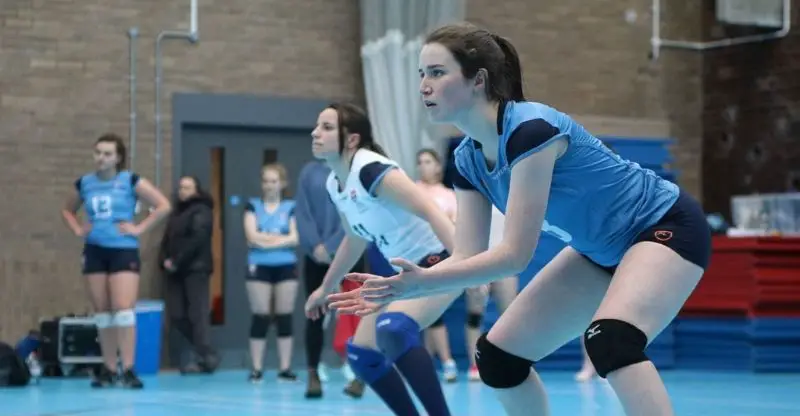A defensive specialist (DS) in volleyball is often confused for the libero, and while these two terms are somewhat interchangeable, the true DS is entirely different.
So, what is a defensive specialist in volleyball? A defensive specialist in volleyball is a specific role separate from the libero belonging to an experienced player on the team proficient in defense technique and strategy. Their role is to substitute weak players on the team and bolster their team’s both defensively and mentally during their toughest matches.
The DS is probably the least well-known role of any in volleyball, and one which is constantly overlooked.
Teams that include one in their lineup – or have a player suitable to play one – consistently perform better at the higher levels than their competition. This is due to the DS experience and leadership qualities, not to mention their presence on court.
In this article, I’m providing a detailed rundown of the DS, including:
- Difference between the DS and Libero
- Why you need a DS on your volleyball team
- The qualities of the best DS
DS vs Libero: What Are The Differences?
While the libero is often referred to as a “defensive specialist” – which is true – they are a highly specialized role limited by unique rules within the game. Sacrificing certain abilities for other flexibilities, the libero was designed to make the role of “defensive specialist” more dynamic.
However, the positional role of DS still exists within some teams. This is usually a player who has a lot of experience and highly developed game knowledge, but can be anyone with a talent for defense.
There are 4 key differences between the DS and libero:
1. Jersey Color
Unlike the libero, the DS doesn’t wear a unique jersey. They function as a normal member of the team under the regular rules and must use an official substitution to enter and leave the court. This limits their scope to one (or in the US, two) rotations normally.
2. Spiking
Whereas the libero cannot spike or contact the ball above the height of the net, the DS is not restricted by these limitations.
In fact, the DS is often a specialist at back-row spiking – or attacking from behind the 10-foot line. This offers their team another option for their offense and can allow the front row to focus on blocking if needed, shoring up that part of the team’s defense.
3. Court Mobility
Although they often enter the court for the entire back row rotation, the DS is not restricted purely to the back row and can rotate completely around the court if left unsubbed. This differs from the libero, who cannot play front row.
There are some situations which call for this, where the coach gives the spiker a break physically or mentally and gives the DS free reign of two back court rotations. The individual strategy differs from team to team, but the DS offers options.
4. Game Time
The libero is a constant presence on court and easily distinguishable in their off-color jersey. Spectators and other teams focus on them, tracking their position throughout the game. No matter the level of opposition, the libero is almost always on the court during a match.
The DS is the opposite. Where the libero comes on court always, the DS only appears against the toughest opponents. Their job is to hang on to every point and make the opposing team’s job a nightmare as they’re unable to score.
Barring this, it’s the DS job to help their team “side out” and rotate through to their strongest hitters to start scoring again.
This means that in some situations, the DS might only play five minutes every match. In most situations, it’s closer to twenty minutes, but without that small amount of time offered their team may have certainly lost.
Is A DS A Good Position To Play In Volleyball?
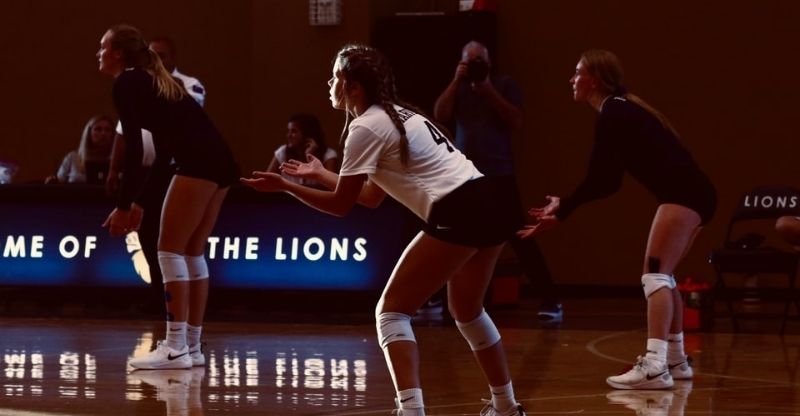
The DS is a great position to play in volleyball. Unlike liberos who get to play the ball more than others (only following setter), defensive specialists only come on at critical moments – or sometimes for a specific player.
Because of the trust placed in them to dig the team out of trouble, their playstyle often leads to exciting points and can be every bit as exciting as being a spiker.
Being a DS requires a good balance of all skills, but with a heavy emphasis on defense.
Alongside the libero, it’s the DS job to take control of the court with game sense and reliability, and due to their experience and game knowledge, DS are often one of the most respected members on the team.
While being a DS might not sound flashy if you boil it down to “defense”, some of the hypest plays start with an epic receive. After all, it’s easier to hit a killer spike than to pass one. Whether passing, diving, picking up the block-touch, or covering for the setter, the DS makes their presence known.
And unlike the libero, the DS can also spike! And unlike normal spikers, the DS specializes in back-row attacks – one of the most inconsistent attacks for most spikers.
The biggest problem some players have with playing DS is that they fear not getting enough time on court.
Truthfully, there are some games which you won’t leave the bench as a DS, as your hitters have a good passing day or the opposing team struggle to put up an offense. That can be disheartening. But your time will come.
It’s important to remember that your worth doesn’t come from the amount of time played; it comes from your impact. And among volleyball positions, the DS has the highest impact-to-time ratio of all.
Why You Need A Defensive Specialist?
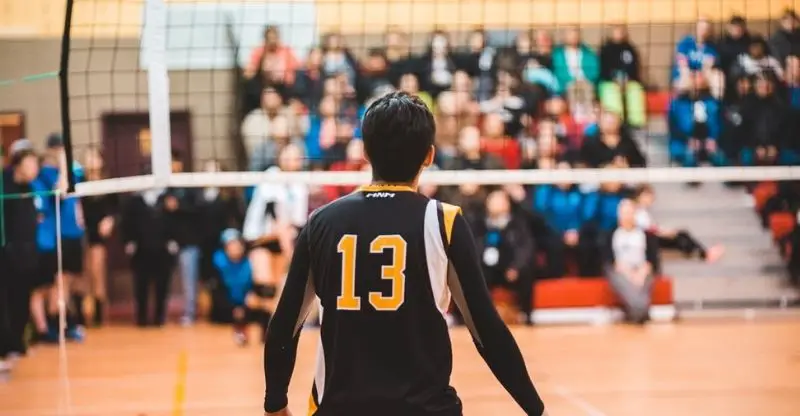
Although a team doesn’t technically “need” a defensive specialist, I believe that any team that has one will both perform and develop better over time. A DS fulfills many roles on a team, all of which a coach should take into consideration before selecting or – during tryouts – passing over.
Here are the 3 reasons teams should have a DS:
1. Leadership
A DS often functions as a role model for their team. As usually one of the most experienced players, they should set a good example for the younger members or those new to the sport, helping to coach and guide them to become an asset to the team.
Being a DS isn’t the most glamorous position, and the DS is often humble despite being a talented player. This unshakable sense of self-worth gives them great mentality that they use to help calm the other members on court during tough points to keep their head in the game and turn things around.
Due to this, it’s no surprise that many DS players are often the captains of their teams, or vice captains. And it is DS players who often go on to become great coaches in later years.
2. Teamwork
Having a DS often helps teamwork flow better. With their impressive amount of game knowledge, they know how and when to make the right calls, earning them trust and respect from their team. This trust from their teammates helps the team to function more effectively as a cohesive unit and commit themselves 100% to a play.
While every team has a captain who guides practice and takes responsibility for the team’s wellbeing, during games some teams implement “row-captains” for front court and back court. These are usually specialist players who the team has designated to lead the defense to better facilitate teamwork in that zone.
For the front court this is usually the middle blocker as the “blocking captain”. Similarly, it should be no surprise that for the back court it’s often the DS (or libero when the DS isn’t there).
3. Defense
On a physical level, the DS allows teamwork to flow better with their defensive skills. By keeping the ball in play, they maintain a positive mentality of their comrades and can turn hopeless points into victory. This ability comes from their rock solid mentality and experience, and is a sign of their dedication to the sport of volleyball.
A DS may have played other roles during their volleyball career – either outside or libero are most common – but has transitioned to DS for one reason or another. This is not because they have been surpassed by their teammates, but because their expertise is unique and necessary to hold this role. Naturally, the years of defensive work for other roles allow them to immediately sub where needed.
In many ways, having a DS is like having another libero, and when two such defensive specialists are on court at the same time, the opposing team’s job just got twice as difficult.
The DS Position In Volleyball: 5 Characteristics
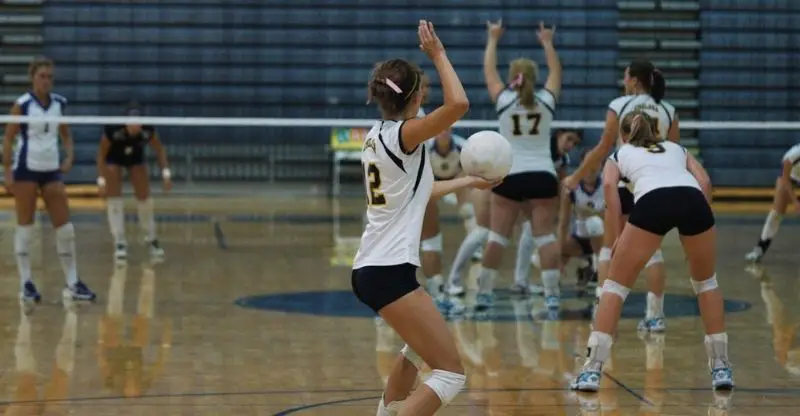
I’ve already mentioned many of the characteristics that make the DS great, but the following list should serve as a resource for anyone contemplating what it takes to be a great one, or for any coaches looking to train their players towards this goal.
While not all the following characteristics are necessary to succeed, these are the five that I believe make a great DS.
1. Perfect Touch
As a defensive specialist, the DS should have a “perfect touch”. As volleyball is a game of instants – touches on the ball without catching it – having the perfect first touch to make the ball go and do whatever you wish is a huge advantage.
This perfect touch can be trained through drills and exercises, but comes just as much from experience.
Visualization also plays a huge part in developing this defensive touch, and has been championed by coaches around the world. Head Coach Bill Stobie explains:
“For experienced players who know how to play a defensive touch, there must be a total focus on visualizing the perfect ball flight in. The brain systems that are used to intercept the ball don’t see the ball flight, they predict where the ball will be based on the initial flight information, gained from the first few feet of the ball’s motion. Their body and arms move to intercept the ball to have it rebound at an angle that will send the ball in an arc to where they imagine it will. The brain works out in the background the necessary adjustments based on your desire for that perfect flight in. So, if you don’t visualize that perfect ball in, it’s less likely to happen. And this works – try it!
Bill Stobie, Scottish Student Sport Representative Team Head Coach, NUVOC Volleyball Club Head Coach, Scottish Men’s Under-20 Assistant Coach and Team Manager.
With visualization, training, and experience, the perfect first touch can be learned, and is one of the skills that any great DS needs to succeed at the highest level.
2. Game Knowledge
A great DS must also have a deep reserve of game knowledge. This has commonly been built up over years of playing volleyball, in different leagues, matches, and tournaments, but can also be supplemented by watching professional matches and attending skill clinics.
Game knowledge encompasses two things: firstly, the entirety of the rules under which volleyball is played; and second, the correct way to answer a given situation.
In the first instance, the DS should know specific rules such as reaching across the net, rotational faults, and screening.
Understanding these and more can help their team use the rules to their advantage and confidently carry out combos without breaking the rules. This will also help the DS prevent their teammates from accidentally costing the team points with a foot out of place.
Secondly, in reacting to a given situation, the DS game knowledge will allow them to move to the area on court which needs them most, reading spikes and feints, calling out the serving seam, and efficiently passing the ball where the setter can best take advantage of it.
“A DS’ main role is primarily to pick up junk: tips off the block, heavy swings off-angle from the middle blocker, and hard angle from the outside hitter. A good DS can adjust to opponents’ offense, make predictive moves, and ensure any non-hard driven ball is able to be passed in a way to run the team’s best offense.
-Luca Jordano, University of St Andrews DS 2016-2020
This makes the opposing team’s job harder and calms their own team, reassuring them that there’s no magic at work, only effort.
3. Flexibility
As a defensive position intended to switch out with a struggling back row player, the DS doesn’t know who that might be on any give day. It might be an outside, or opposite, or even a middle (if the libero is having a bad day and needs to exit court also). In rare cases, the DS may even substitute the setter.
In short, the DS must be the most flexible player on the team. Not only must they understand the difference in defending for each role, but how they move on court and their individual jobs. This can be extremely daunting for a new player, which is one reason why the DS is usually entrusted to experienced players.
Additionally, the DS may be asked to fill in for a player – usually outside – during a match. This, or a sudden substitution at any point by the coach, means they need to adapt quickly and play at a high level immediately. While this can be fun and exciting, it’s also very difficult.
4. Solid Mentality
A DS must absolutely, without question, have a solid mental state while playing. Volleyball is a highly mental sport in addition to the physical components, so it’s not unusual for players to get emotional with extreme highs and extreme lows, but the DS cannot.
As one of the respected members on the team, how they react on court will be picked up by their teammates and mirrored. Staying cool in the face of challenges ensures that they continue to play their best while contributing to the collective mentality of the team.
Additionally, the DS often gets put into play when the team is behind in points. Thinking negatively will do nothing to turn the situation around, and dwelling on the difference can be depressing. The DS must not be emotional in this situation, otherwise their impact will be far less than desired.
Having a strong mentality is an important thing to learn for any volleyball player, and the DS is a great role model for others to learn.
5. Back Row Attacker
Perhaps surprisingly, a great DS should be a proficient back row attacker. This is to give the setter another reliable option besides constantly setting the outside, and provide the team with another method through which to earn points.
The purpose of the DS isn’t to spike harder than the outsides, so don’t focus on that when training your back row attacks.
Your purpose as a DS is to provide a consistent, accurate barrage from an unexpected angle that the other team must react to. Using their own knowledge of defense, the DS should target tricky zones on court to hit to and avoid spiking out or in the net while doing so.
While hopefully you will score some points, the primary goal is to free up your spikers and divide the defender’s attention, weakening their defense.
4 Drills For Defensive Specialists
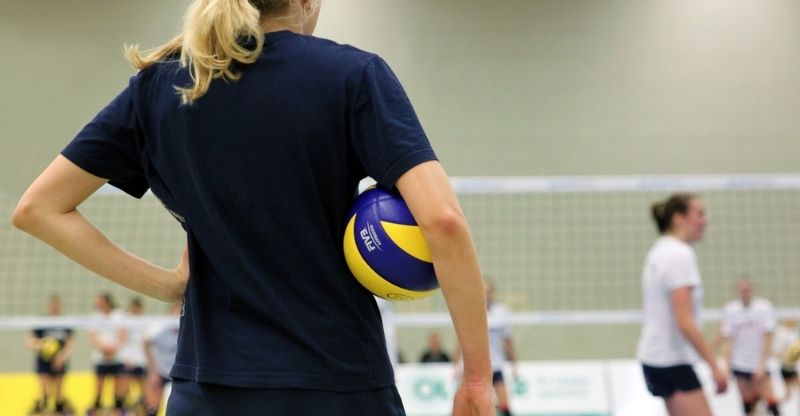
1. Role Flexibility Drill
To train flexibility and further the DS game knowledge on court, the best method of training is to have them play different roles during practice scrimmages.
Regularly switch out a member of the back row each week and have the DS fill in. Complete one full rotation before switching them out again. Switch the DS in for the other side (ideally in a different role) and continue play. Repeat until the scrimmage match or set is over.
The purpose of this drill is to familiarize the DS with switching positions quickly and often by thrusting them into constantly changing situations within different teams.
Different team members and positions mean that the DS must adapt swiftly to be effective, similar to the stress and chaos of a real match. Forcing them to compete against the points they just earned builds mental toughness also.
Coaches, keep track of the points for their side when the DS enters and leaves the court. The more points they can help their team hold on to, the better. If the time comes when the DS finishes the set without completing their rotation, make a note of the players on court: you have a fearsome lineup on your hands.
2. Deep Passing Drill
Unlike the libero, who plays position five and is primarily responsible for covering all of the front court and their position, the DS usually fills in for the outside in position six. This means that they are responsible for returning deep balls and should drill appropriately.
For this drill, have your players stand on the sideline next to the ten foot line. Slap the ball and toss it high and deep over the net towards them, with a static player to catch the pass in the setter’s position.
At the slap, have the player run deep into position to return the ball, and pass it to the static setter. Toss a second ball short which they must scramble to pick up, and join the end of the que. This should be a fast paced drill that emphasizes quick footwork and pace, so is a good warmup to get players’ blood pumping.
The purpose of this is not only accuracy in the pass, it’s the lateral mobility to chase a ball and return it to the setter that the DS needs in those deep situations in-match. This will also benefit your other backrow players, and even the setter.
Use a point system or timer as needed, and follow this up with a more technical drill to conserve stamina through practice.
3. Spiking Drill: Back Court
The best way to practice spiking is with a net. If solo, practice by downballing from behind the ten foot line and then, when comfortable, toss to yourself. Spike as close to the ten foot line as you can get while keeping the ball in bounds, and slowly increase your power.
With teammates, shift hitting lines to accommodate back row spiking. This is by far the best way to practice this kind of technique, and having a teammate film you from the sidelines will increase your growth also.
Without a net, find either a friend or a wall. Similar to solo work with a net, downball to them while focusing on the arc and spin of your spike. Aim to catch the volleyball instead of bouncing it, to mimic the extra distance needed to cross the net from backrow.
As with other levels of spiking, training without a net can only take you to a certain level. Talk with your coach or captain and arrange to have some time to practice backrow spiking during practice. Attempting this without practice in the middle of a match will feel awkward and may lead to lost points, so always practice!
Frequently Asked Questions
Is Ds and Libero the Same Thing?
No. While a libero is often referred to as a “defensive specialist” – which is accurate – the positional role of DS belongs to its own player with its own strategies and purpose. However, both the libero and the DS are considered defensive experts or specialists, and as such can be referred without problem.
What Does Ds Stand for in Volleyball?
DS stands for “defensive specialist” in volleyball. This usually refers to the positional role of DS – a strategic and highly skilled player who can substitute in for any member on the team. The purpose of the DS is to shore up the defense of a team and shorten/length leads as necessary. They are often one of the most experienced players on court and trusted to make the right calls.
